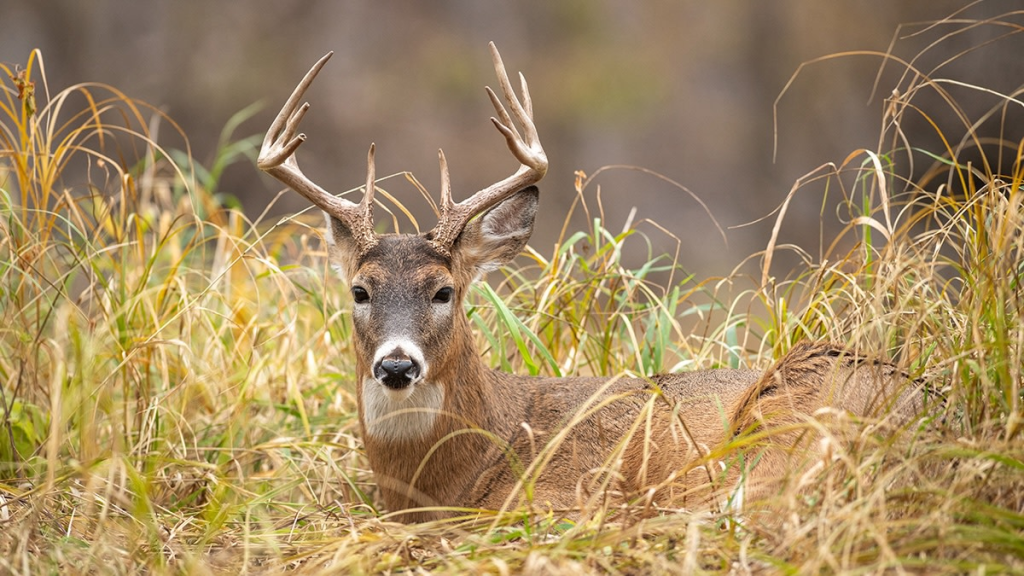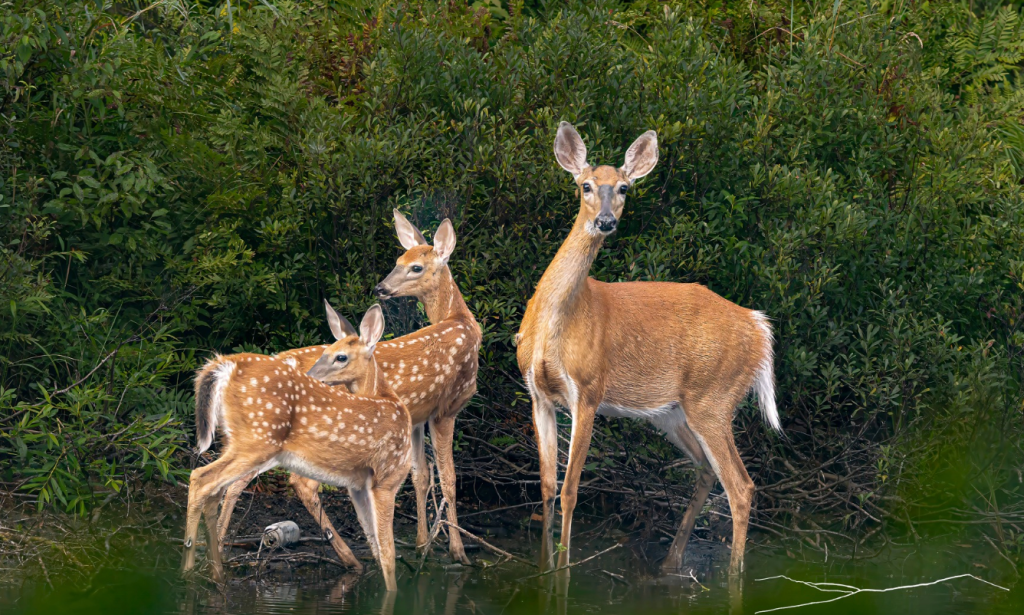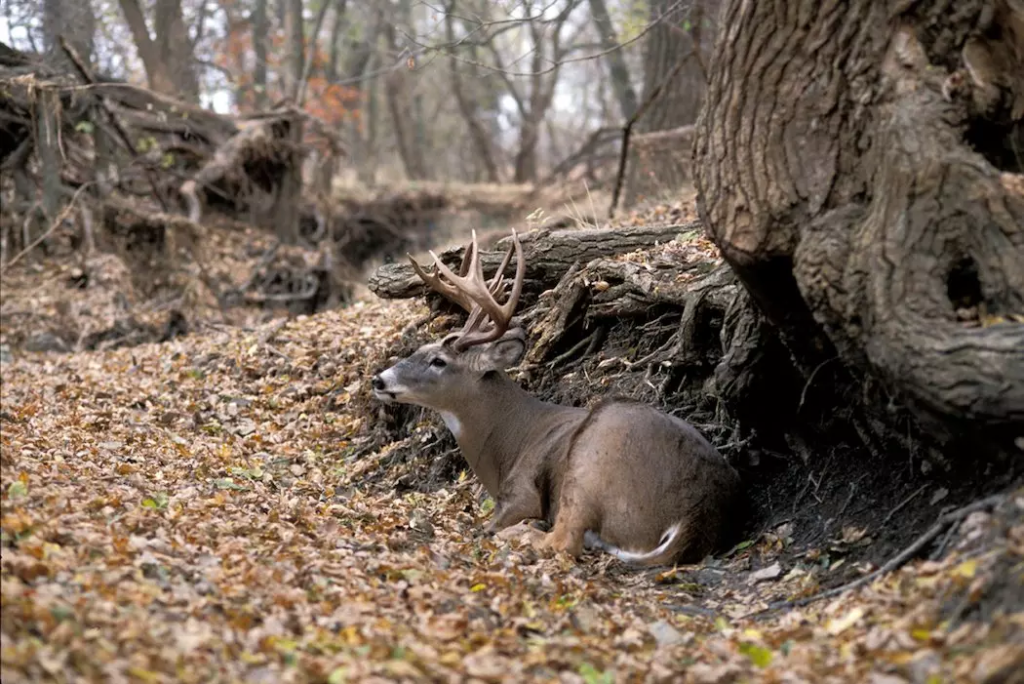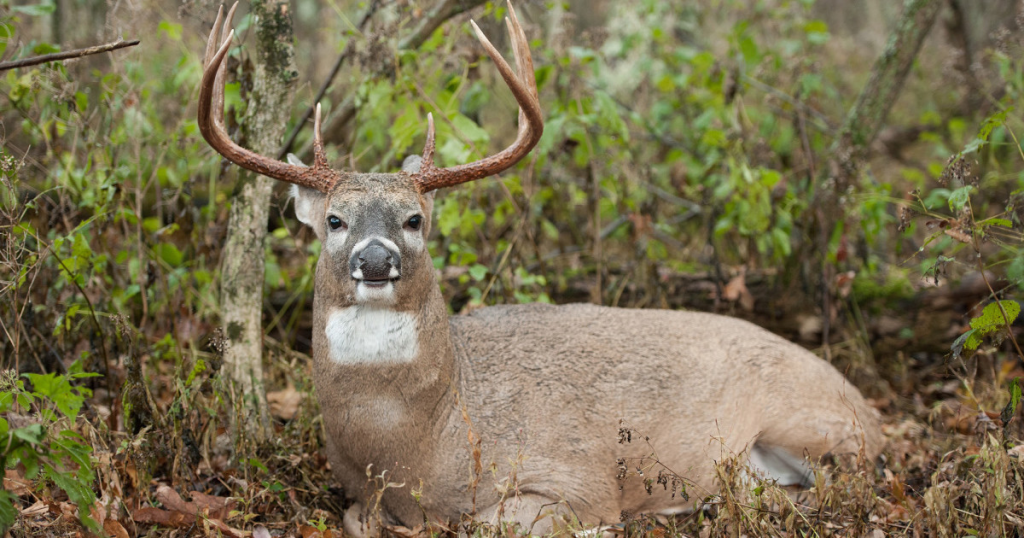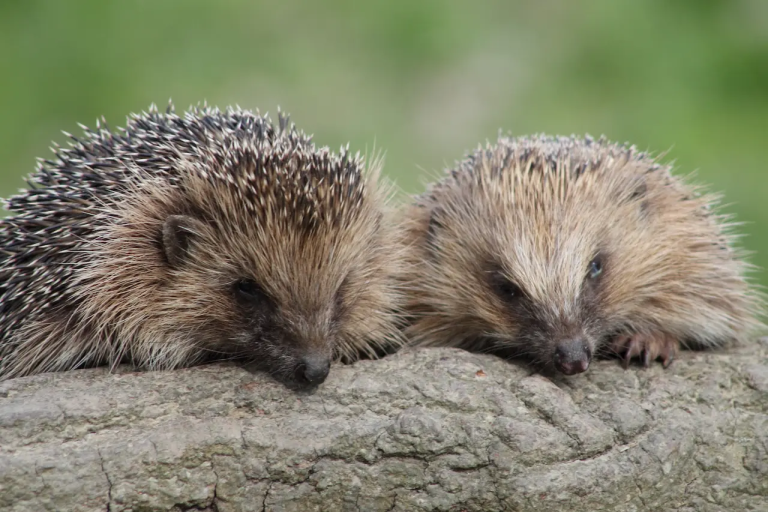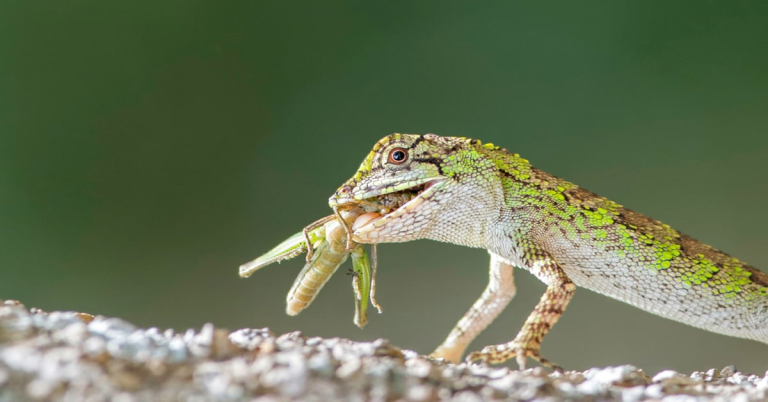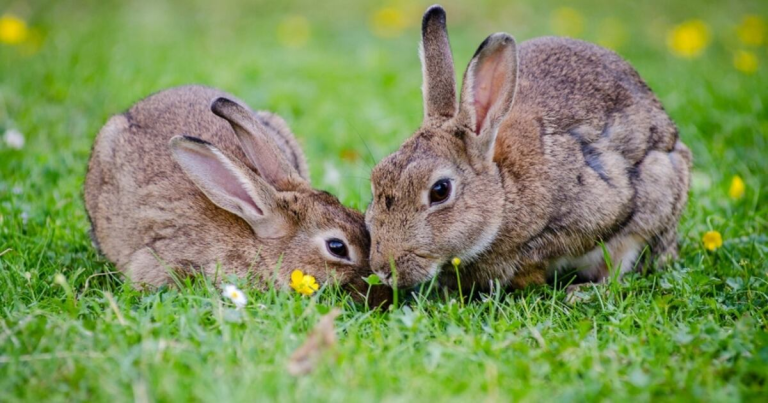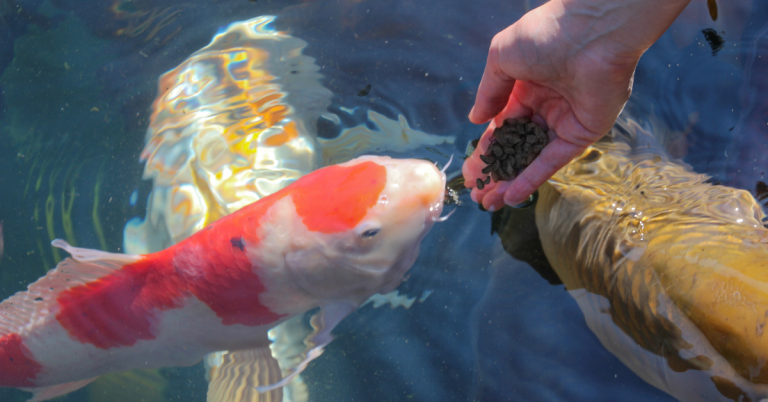Where do Deer Sleep: Hidden Bedding Spots, Daily Patterns & Survival Behaviors Explained
Deer are most visible at dawn and dusk while feeding, but during the day, they seem to vanish. Many wildlife enthusiasts, hunters, and landowners ask:
Where do deer actually sleep?
Short Answer
Deer usually sleep in sheltered bedding areas such as tall grass, dense brush, wooded edges, hill points, swamps, and thickets. They choose locations that balance cover, visibility, and quick escape routes. Deer sleep in short intervals, staying partially alert, and rotate bedding areas depending on season, weather, and hunting pressure.
Where Deer Sleep: Detailed Overview
Deer select bedding areas based on cover, visibility, wind direction, escape routes, and proximity to food sources. Choosing the right spot is critical for survival, predator avoidance, and energy conservation.
Primary Bedding Types and Locations
1. Tall Grass & Prairie Brush
Tall grass patches and prairie brush provide excellent concealment from predators. Bucks often bed near edges to detect threats while maintaining cover. These areas are especially common in Midwest prairies and CRP fields.
2. Dense Shrub Patches
Thick understory, such as hawthorn, blackberry, and willow, offers vertical and horizontal cover. These patches protect deer against both aerial and terrestrial predators.
3. Wooded Edges & Ridge Tops
Edge habitats where forests meet fields provide food access and visibility. Ridge tops help deer detect predators early and offer wind advantages.
4. Leeward Slopes & Hill Points
Leeward slopes protect deer from wind and harsh weather. Bucks often bed here for vantage points and quick escape options.
5. Swamps & Marsh Islands
These areas are extremely secure and rarely approached by predators, making them preferred bedding spots in northern regions and wetland-heavy landscapes.
6. Evergreen Thickets (Pine & Cedar)
Evergreen cover retains warmth during winter and shields deer from wind and snow. Does and fawns frequently use these areas.
7. Clearcuts (2–10 Years Old)
Regenerating forests provide dense vegetation for cover while scattered forbs offer nearby food sources.
8. Agricultural Fields (Corn, Soy, or Wheat Rows)
Deer often bed along field edges or unharvested strips. These areas provide concealment while remaining close to food.
Deer Sleep During the Day
Deer are primarily crepuscular, meaning they are most active during dawn and dusk. However, during daylight hours, deer must rest while remaining vigilant against predators and human activity. Daytime sleep is an essential part of their survival strategy, allowing them to conserve energy, digest food, and minimize exposure in open areas.
Short Naps in Dense Cover
During the day, deer take frequent short naps, often lasting only a few minutes at a time. These naps typically occur in dense cover such as tall grass, brush piles, or forest understory. Even when lying down, deer rarely enter deep sleep unless the location is exceptionally secure, as their survival depends on constant awareness of predators and environmental threats.
Partial Alertness
While resting, deer maintain a level of partial alertness. Their ears move continuously to pick up sounds, noses sniff for scents, and eyes scan their surroundings. This light sleep allows them to quickly react to danger, whether it comes from coyotes, bobcats, birds of prey, or human activity.
Group Bedding by Does
Does often bed together in groups, especially when fawns are present. Group bedding provides protection for the young, as multiple does can watch for predators simultaneously. Fawns are usually concealed in the dense vegetation of the bed, relying on their mother and the group for safety while they rest during the day.
Bucks Sleep Alone
In contrast, bucks usually bed alone in more isolated locations. They select elevated or hidden spots to avoid potential threats and reduce competition for space. Bucks may also rotate bedding areas more frequently during hunting season or when predator pressure is high, minimizing the chances of detection.
Fawns Remain Hidden
Fawns tend to remain in tall vegetation or dense brush while the mother forages nearby. This strategy ensures the fawn’s safety by keeping it out of sight from predators while still allowing it access to warmth and protection. The mother may return periodically to nurse, but the fawn often spends several hours resting quietly on its own.
Behavioral Adaptations
Daytime sleep patterns are influenced by season, habitat, and human disturbance. In areas with high hunting pressure, deer may choose thicker cover or bed farther from trails and roads. In more natural, undisturbed habitats, bedding areas may be closer to food sources while still providing sufficient concealment. Observing these patterns helps wildlife enthusiasts, biologists, and hunters understand where deer sleep and how they use their environment throughout the day.
By studying daytime bedding behavior, we can gain insight into deer movement patterns, energy conservation strategies, and predator avoidance techniques, forming a foundation for both wildlife management and ethical observation.
Deer Sleep at Night
While deer are primarily crepuscular, their nighttime behaviors are equally important for survival. Nighttime provides extended periods for resting and feeding, but deer must still balance safety, visibility, and energy conservation. Unlike daytime bedding, deer at night often shift locations slightly, adapting to environmental conditions and predator pressure.
Preferred Nighttime Bedding Locations
At night, deer tend to select bedding areas that offer some visibility, allowing them to detect approaching predators while still being concealed. Common nighttime beds include forest edges, clearings adjacent to dense cover, elevated ridges, and brush-lined field edges. These areas provide a vantage point while minimizing exposure. Bucks often favor isolated locations with good sightlines, whereas does and fawns may choose thicker cover for protection.
Quick Escape Routes
A critical factor in nighttime bedding selection is access to escape routes. Deer often bed near trails, small openings, or hedgerows that allow rapid flight if a threat is detected. Even subtle changes in terrain, such as a hill slope or a small ditch, can influence bedding choice, as these features offer both cover and strategic exit paths.
Solitary Bucks
Male deer (bucks) continue their solitary behavior at night. They often rotate beds between night and day, especially during hunting season or in areas with higher predator activity. Nighttime beds chosen by bucks are usually more concealed and elevated, reducing competition and increasing safety.
Does and Fawns Rotate Beds for Safety
Females (does) and their young (fawns) typically rotate bedding areas at night, even more so than during the day. This rotation reduces the chance of predators detecting a pattern, and keeps fawns safer by frequently moving them to fresh cover. Does often position beds near feeding areas but still ensure they are hidden in dense vegetation, allowing fawns to rest undisturbed.
Behavioral Adaptations
Nighttime sleep patterns are influenced by moonlight, temperature, predator activity, and human disturbance. On bright nights, deer may seek heavier cover to avoid being silhouetted, whereas on overcast nights, they may use more open areas with better escape routes. Temperature extremes also affect bedding choice: in cold weather, deer select sheltered areas that conserve heat, while in hot summer nights, they prefer areas that remain cool and ventilated.
By understanding where deer sleep at night, wildlife observers, researchers, and hunters can gain valuable insight into deer movement patterns, habitat preferences, and predator avoidance strategies. Nighttime bedding is a critical component of the deer’s daily survival, reflecting a delicate balance between rest, safety, and environmental awareness.
Winter Bedding Behavior
During winter, bedding emphasizes thermal protection:
- South-facing slopes maximize sunlight exposure
- Cedar and pine cover serve as windbreaks
- Low-lying areas with snow provide insulation
- Proximity to food minimizes energy expenditure
Bucks vs Does vs Fawns: Bedding Differences
Buck Beds
- Solitary
- Often located on elevated or exposed points with cover nearby
- Larger oval depressions
- Single entry and exit routes
Doe Beds
- Grouped for protection
- Found in thick cover near feeding areas
- Smaller, circular depressions
Fawn Beds
- Extremely well-camouflaged
- Usually near mother’s bedding area
- Located in tall grass or dense brush
Identifying Deer Beds in the Field
Observing deer beds in the wild requires careful attention to subtle signs in the landscape. Deer bedding areas are often well-camouflaged, designed to provide maximum cover while allowing the animals to remain partially alert. Knowing how to identify these beds is crucial for hunters, wildlife researchers, and nature enthusiasts who want to understand deer behavior and habitat use.
Key Signs of Deer Bedding
- Oval Depressions
Deer beds typically form oval-shaped depressions roughly 3–4 feet long and 1–2 feet wide. Bucks, being larger, tend to leave slightly bigger depressions, while does and fawns create smaller, more circular beds. The depressions are often shallow but noticeable if you know what to look for. - Flattened Vegetation and Landing Zones
Around the main depression, the grass or brush is usually flattened, creating a small “landing zone” where the deer enters and exits the bed. Look for areas where vegetation has been pressed down without being broken — this indicates repeated use. - Fresh Hoof Prints
Tracks leading to and from the bedding site are one of the clearest indicators. Fresh hoof prints show recent activity and can often reveal the direction deer moved to feed or escape. - Droppings and Hair
Small piles of droppings or tufts of shed hair may be found near the bed. Fawns often leave less obvious signs, but does may leave small piles near their bedding area. Hair can accumulate on brush or grass within the bed, providing another visual cue. - Snow or Frost Impressions
In colder climates, snow or frost can highlight deer beds. Fresh beds appear as warm, sunken impressions in the snow or frost, while older beds gradually fill in as snow melts or vegetation rebounds. - Vegetation Bent Without Breaking
Unlike areas where animals have trampled vegetation forcefully, deer bedding areas usually feature grass or small plants that are bent but not broken, preserving camouflage. This subtle difference can help distinguish bedding areas from feeding zones or paths.
Fresh vs. Old Beds
- Fresh Beds: Recently used, with flattened grass, warm soil, visible hoof prints, and sometimes droppings. Micro-naps or full rest sessions may have occurred within the past 24 hours.
- Old Beds: Vegetation has regrown or rebounded, depressions are shallow, no fresh tracks are present, and droppings may be weathered or absent. These areas indicate past use but may no longer be active bedding sites.
Additional Tips for Field Identification
- Look for beds near cover such as brush, tall grass, or timber edges.
- Wind direction matters: deer usually bed with their heads facing into the wind to detect predators by scent.
- Seasonal changes: bedding areas may shift between summer and winter depending on food availability, snow depth, and predator pressure.
- Observing from a distance with binoculars helps avoid disturbing the deer while confirming the bedding site.
By paying attention to these signs, wildlife enthusiasts and hunters can gain valuable insights into deer behavior, habitat selection, and movement patterns. Identifying bedding areas accurately also provides critical information for wildlife management, conservation planning, and ethical hunting practices.
Bedding by Habitat
| Habitat Type | Common Bedding | Notes |
|---|---|---|
| Forest/Woodland | Under conifers, behind logs, ridge benches | Protection + visibility |
| Grassland/Prairie | Tall grass, brush clumps, CRP fields | Cover + quick escape |
| Agricultural Edges | Corn/soy edges, fencerows | Proximity to food |
| Wetlands | Cattail pockets, swamps | Predator protection |
| Suburban | Overgrown yards, drainage ditches | Human-adapted bedding |
Body Posture & Sleep Cycles
Deer typically rest lying down, rarely standing except for very short alert moments. Their sleep patterns and body postures are finely tuned to survival, allowing them to stay alert for predators while still obtaining the rest they need. Understanding these postures provides insight into how deer manage energy, detect threats, and select bedding areas.
Light Sleep
During light sleep, deer often keep their heads up or slightly lowered, with ears constantly moving to detect sounds from their surroundings. This stage allows them to rest while remaining partially alert to predators such as coyotes, bobcats, or human presence. Light sleep is characterized by short naps lasting only a few minutes at a time, and it often occurs in exposed areas of the bedding site where cover is moderate but visibility is high. This vigilance enables deer to quickly spring to action if danger approaches.
Deep Sleep
Deep sleep occurs only in secure, well-concealed bedding areas, such as dense brush, tall grass, or under evergreen thickets. In this stage, deer tuck their heads or lay them on their flanks, closing their eyes completely. Deep sleep allows for true rest and recovery but is relatively brief, typically lasting 15–30 minutes per episode, since deer remain sensitive to nearby threats. Bucks and does both experience deep sleep, but does often share proximity with fawns, requiring intermittent awakening to check on their young.
Total Rest and Micro-Naps
Across a 24-hour period, deer accumulate 8–12 hours of total rest, but only 2–3 hours of this is deep, uninterrupted sleep. The remainder is made up of short micro-naps lasting 3–10 minutes each, interspersed throughout the day and night. This pattern allows deer to balance energy conservation with predator vigilance, ensuring survival in habitats where threats are constant.
Differences Between Bucks and Does
Bucks and does differ in both sleep location and timing:
- Bucks: Prefer elevated or isolated spots, often on ridges or leeward slopes. They typically sleep alone and may rotate beds frequently to avoid predators and human disturbance, especially during hunting season.
- Does: Usually choose bedding sites closer to feeding areas, often in groups with fawns. Their sleep cycles may be more fragmented, as they wake periodically to monitor or nurse fawns.
Environmental factors, including weather, wind direction, hunting pressure, and predator activity, can alter these sleep patterns. For example, deer may shorten deep sleep duration during periods of heavy human activity or high predator density, while during calm, secure periods, they may achieve longer deep sleep intervals.
By observing deer body posture and sleep cycles, wildlife enthusiasts and hunters can gain valuable insight into bedding preferences, habitat quality, and animal health, providing a more complete understanding of where deer truly sleep and how they survive in the wild.
Influence of Predators, Weather, and Human Pressure
- Predators: coyotes, bobcats, mountain lions, bears
- Weather: wind, rain, snow, heat
- Hunting pressure: deer rotate beds, select less accessible terrain, and bed in denser cover
Scientific Insights
Telemetry studies confirm:
- Deer rarely sleep continuously
- Deep sleep only occurs in secure bedding areas
- Seasonal rotation is critical for survival
FAQ
Q1: Do deer sleep in the same place every day?
A: No, bucks rotate bedding areas; does are more consistent to protect fawns.
Q2: How long do deer sleep?
A: 8–12 hours of rest per day, with only 2–3 hours of deep sleep.
Q3: Where do deer sleep when it rains?
A: In open but defensible areas, avoiding low spots prone to predators.
Q4: Do deer sleep together?
A: Does often bed together; bucks usually sleep alone.
Q5: How far do deer travel from bedding areas?
A: Usually 0.2–1 mile, depending on food availability and cover.
Conclusion
Deer strategically select bedding areas to survive predators, conserve energy, and access food. Understanding where deer sleep requires recognizing habitat types, seasonal changes, predator and human pressures, and species-specific behavior (bucks, does, fawns). This guide provides comprehensive, actionable information that ensures both wildlife enthusiasts and hunters can identify bedding areas accurately while providing a top-ranking, authoritative resource for search engines.


